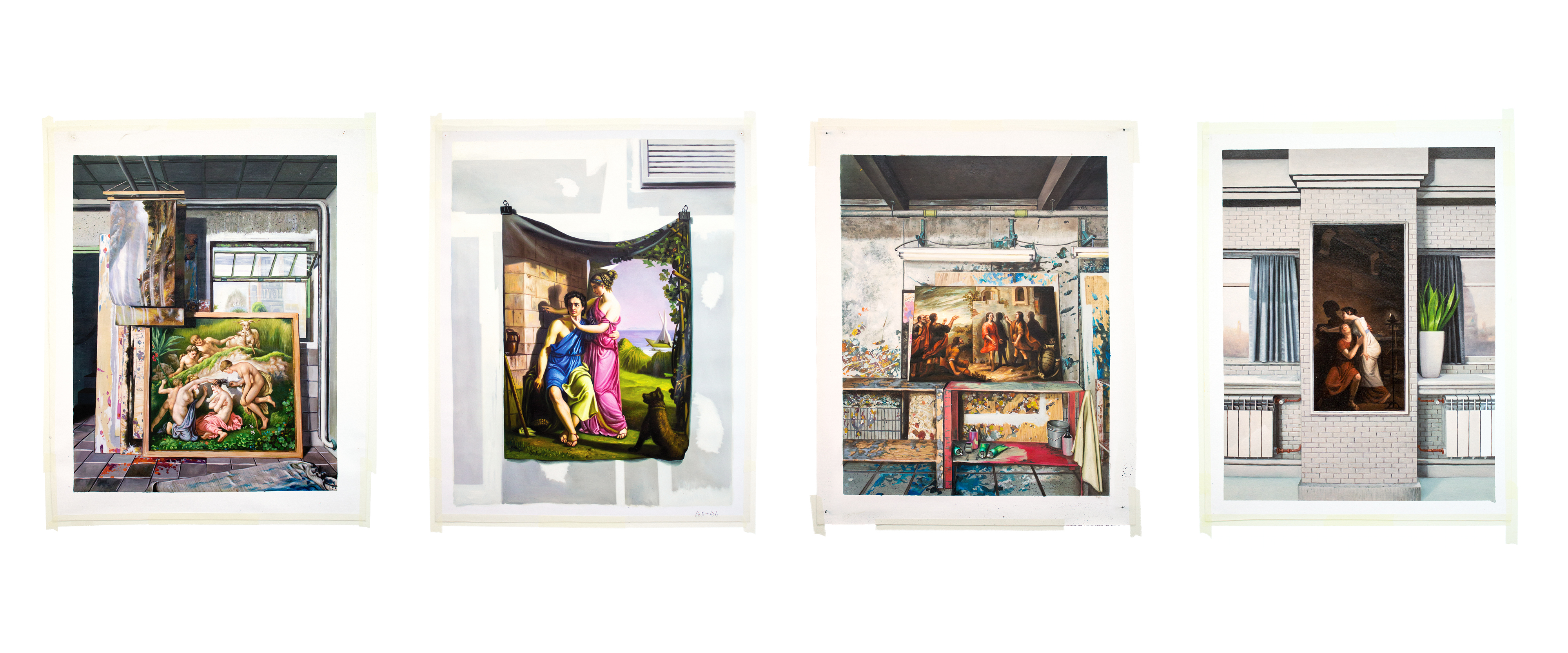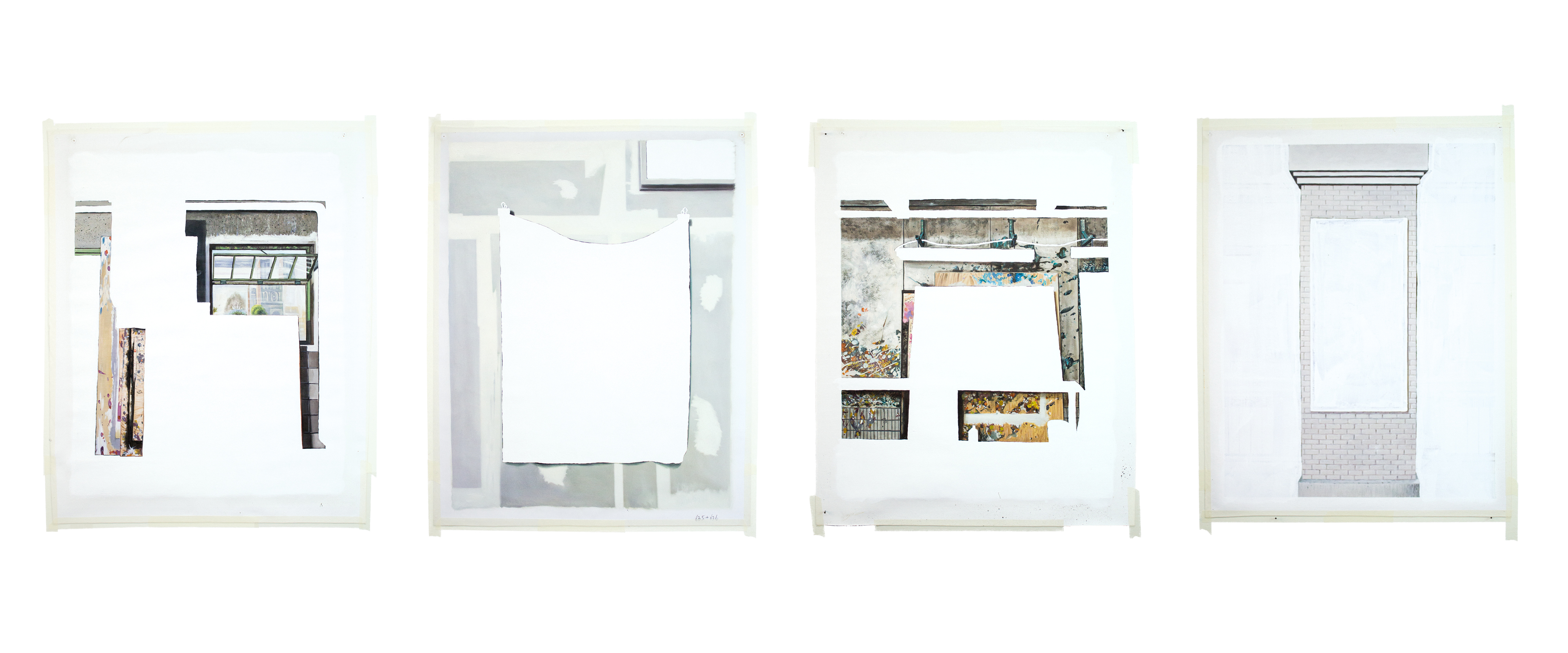Curtis Roth
This article is published in collaboration with the forthcoming issue of Perspecta: The Yale Architectural Journal.
It first appears here and will later appear in Perspecta 53: Onus.

According to Richard Upjohn’s keynote lecture at the American Institute of Architects’ first general convention in 1867, “Our merchandise is our brain, we sell our ideas.” By our, Upjohn circumscribed an emerging body of mostly middle-class design professionals as distinct from the mostly lower-class master builders of previous centuries. By selling our ideas, Upjohn suggested that in order to make this distinction visible within the competitive economies of construction, the minds of architects needed to be disentangled from the bodies of builders. But if the century of architectural professionalization following Upjohn’s declaration consisted of increasingly sophisticated borders drawn between authorship (as creative intellection) and construction (as anonymous bodily labor), we might also remember that Upjohn’s author is made possible only by erasing alternative forms of creativity we haven’t yet named.
Take for example: or equivalent, that peculiar postscript appearing at the tail-end of an architect’s specifications, intended to ensure that unwieldy matter submits to the ideas that claim to organize it. Or equivalent obligates a worker to preserve an idea’s coherence as it travels through the unpredictable networks of production; substituting 5/8” sheetrock for its 3/4” equivalent, or replacing Benjamin Moore’s Whisper White with Frothy Surf. But while anyone might be excused for mistaking two oily off-whites, any assertion of the equivalence between this and that becomes a creative proposition, one in which the carefully parceled authorial brainwork of design leaks into the anonymous bodily labors of construction.
That being said, for all that or equivalent would seem to undermine Upjohn’s aging model of authorship, its obligation to substitute this for that is only successfully fulfilled when the worker’s creative substitution remains invisible. In other words, or equivalent places an onus on laborers to creatively erase the evidence of their authorship so as to better preserve an architect’s intellectual merchandise.
This is all to suggest that perhaps by re-staging the problem of equivalence, we might also begin to imagine another model of authorship altogether. One that leaks across Upjohn’s distinction between minds and bodies. Building upon the premise that the construction of the architectural imagination has always been the construction of boundaries between themselves and others, we point toward another creativity that is more difficult to circumscribe within the competitive economies of construction.
In a small, gated development located three kilometers outside the Special Economic Zone of the Chinese megacity Shenzhen, over one-hundred painters gather every year for a competition, producing one-hundred copies of paintings such as Ilya Repin’s 1883 portrait of Russian art critic Vladimir Stasov. This is Dafen Village, the turpentine-soaked capital of copied art. Established during the post-socialist economic reforms of China in the early 1990s, Dafen is responsible for over 60% of the earth’s total volume of reproduction paintings. Paradoxically, the marginalized, mostly migrant painters participating in this annual competition are competing for liberation from the US$43,000,000 copying economy itself.
If Walter Banjamin’s “The Work of Art in the Age of Mechanical Reproduction” claimed, “…that which withers under modernity is the aura of the work of art,” then Dafen is nothing less than the mass-manual remanufacturing of modernity’s lost auras. Dafen’s economy is premised not only on the painter’s ability to reinvest oversaturated images like Van Gogh’s self-portrait or da Vinci’s Mona Lisa with the financial premiums associated with hand-crafted auras, but moreover, it runs on a state-sanctioned narrative that the perfect resurrection of such auras might even elevate the brute labor of copying into an “original” artistic act in itself. Call it Dafen’s Dream: original authorship born out of the perfect copy while supplying Dafen’s economy with a steady stream of low-cost painting labor. A competitor’s ability to convincingly resurrect Repin’s aura is judged by the local propaganda department, and the top ten painters are awarded state sponsorship as original artists, and, more importantly, afforded the right to legally register as citizens of Dafen.
This aspiration turns upon two competing accounts of painting’s value—as a culturally profitable form of artistic expression, and as the financially profitable organization of surplus labor. The worker’s proficiency in resurrecting auras, adjudicated through competitions like the Dafen Copying Competition, serves as the measure for disentangling the former from the latter, and, ultimately, humans from nonhumans.
In 2004, in an effort to rebrand Dafen as a Bohemian tourist attraction, the village was rezoned, from a migrant worker’s settlement into a residential community. The select minority of original-artist citizens were afforded a collection of human rights such as housing and political representation that differentiate these artists from the scores of undocumented laborers anonymously Frankensteining the over-glowing lamp-lit auras lining hotel lobbies across the earth. Today, this aspirational dream differentiates artists from their undocumented counterparts and parcels the city itself. It relocates the fraction of original artists to highly visible, ground-floor studios along popular tourist avenues, and segregates scores of undocumented laborers into the unregulated recesses of corporate-owned image factories in which painters collectively sleep, live, and labor.
My work Equivalent Interiors attempts to render the segregation of Dafen’s aura economy visible through the deployment of architecture’s own instrument for managing the authority of authorship over labor: or equivalent.
The project began by soliciting ten images from ten Dafen copying corporations. Each corporation was contracted to reproduce a single historical example from the marginal 19th-century painterly genre illustrating Pliny’s mythic origin of drawing. Each commission was accompanied by an architectural specification dictating the precise conditions for each image’s reproduction. Where Pliny’s myth portrayed the origin of drawing in Kora of Sicyon’s tracing of her lover’s shadow across the wall of an architectural interior, each attached specification obliged a painter to produce the equivalent or to depict the historical painting itself on the factory wall against which they toiled. Upon the completion of these original ten equivalent images, the canvases were mailed to one of the original painter’s local competitors, who were supplied with a second specification obliging this second painter to erase all but the studio wall of the original painting’s producer.
On its surface, the collection of images represents an attempt to render the urban erasure of Dafen’s labor visible in the frame of the image itself. But the successful execution of each image was also compromised by the state-sponsored onus of originality under which each painter labors. In other words, each of the ten paintings raises a strange question, namely: whose agency caused these spaces to appear? Within each image, three irreconcilable accounts of authorship seem to coexist.
First, in those instances in which a viewer believes that the specification was diligently executed by the original painter, then the author of the painting’s content seems caught in roughly equal measure between the authority of my specification—as an instrument causing the institutionally erased recesses of Dafen to appear in the image’s frame—and the original architect, whose own specifications resulted in the construction of the wall depicted by the representation. Whether the painting’s observer locates the authorial act in the specification of the painting or that of the original wall, either account relies on the reification of Upjohn’s model in which the creative work of the mind organizes the anonymous bodily labors of fabrication.
But, in most instances, the paintings themselves would likely fail to convince the observer that my own specification was ever executed at all. That is, a viewer might suspect that the idealized studio interiors depicted in the paintings are less acts of documentation than they are aspirational renderings of the fictive artist-personas manufactured by the state itself. Rather than an authorial act caught between myself and the wall’s original architect, this reading would locate the painting’s authorship somewhere between the imagination of the contracted painter herself and the imagination of state bureaucrats fabricating Dafen’s Dream through zoning codes, residency permits, and tourism advertisements.
However, for all that this second account would replace minds-versus-bodies with an imagination diffused across a vast array of anonymous factory painters and unnamed civil servants, this account itself is undermined by the act of erasure by the second painter. She is asked by the specification to creatively adjudicate which elements of a painted image constitute a wall and which elements constitute erasable content. Here, like a construction laborer creatively executing the or equivalent postscript of a construction document, the second painter operates within the inherently ambiguous nature of a wall to draw distinctions between planar surfaces and perpendicular porticos or chamfered edges of crown molding profiles. Each distinction between the wall and everything else, or what’s erased and what remains, is turned into a speculative redefinition of a wall itself.
Which is all to say that each of the ten images leverage the ambiguity of the architectural specification to entangle authorial thought and manual labor. In doing so, the images also suggest that the professional conventions through which the discipline constructs authority over certain forms of the imagination rely on the fabrication of distinctions between architects’ brains and others’ bodies. To imagine forms of architectural work that resist historical distinctions between brains and bodies is not just to reimagine the conventions of authorship, but to redesign the instruments through which
architects construct themselves.













